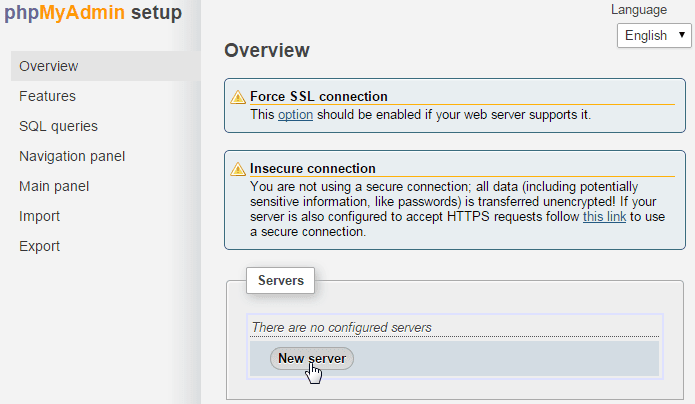
In this guide we will install and configure phpMyAdmin to work with Apache on Ubuntu Server 18.04 LTS (Bionic Beaver). PhpMyAdmin is open source free software, designed to handle the administration and management of MySQL databases through a graphic user interface. I have been playing with Ubuntu 18.04 LTS, soon to be released I have it installed on VMware Workstation guest machine In this test I learn how to install phpMyAdmin. PhpMyAdmin is a web-based tool that allows users to easily manage MySQL or MariaDB databases.
PhpMyAdmin is an open source tool used for the administration of MySQL. Canon Printer Drivers Pixma Mp 800 Driver on this page. In addition to offering the capability to perform administration tasks such as creating, editing, or deleting databases, and managing users and permissions, phpMyAdmin provides a graphical user interface to do all of these tasks and more.
Pre-Flight Check • These instructions are intended specifically for installing phpMyAdmin on Ubuntu 14. Graphpad Aio: Prism 4.0, Instat 3.05, Statmate (upped By Jf). 04 LTS. • I’ll be working from a Liquid Web Core Managed Ubuntu 14.04 LTS server, and I’ll be logged in as root.
• A LAMP, Linux, Apache, MySQL, and PHP, must be installed and running on your server. If you’re working from a Liquid Web Core Managed Ubuntu 14.04 LTS server as I am, then the LAMP stack is already installed! Installing phpMyAdmin Step 1: Install phpMyAdmin First, you’ll follow a simple best practice: ensuring the list of available packages is up to date before installing anything new. Apt-get -y update Then it’s a matter of just running one command for installation via apt-get: apt-get -y install phpmyadmin Step 2: Basic Configuration As the installation runs you’ll be asked a few simple questions regarding the basic configuration of phpMyAdmin. At the first screen, select apache2 by using the spacebar, then hit enter to continue. At the second screen, which asks “configure the database for phpMyAdmin with dbconfig-common?”, select Yes, then hit enter to continue. In this third screen enter your administrative password this is also the MySQL root (admin) user password, hit enter to continue.
Finally, at the fourth screen set the password you’ll use to log into phpMyAdmin, hit enter to continue, and confirm your password. Step 3: Finish the Configuration of Apache For a refresher on editing files with vim see: vim /etc/apache2/apache2.conf Add the following to the bottom of the file: # phpMyAdmin Configuration Include /etc/phpmyadmin/apache.conf Then exit and save the file with the command:wq. Restart Apache 2 with the following command: service apache2 restart Verify that phpMyAdmin is working by visiting the_IP_of_your_server/phpmyadmin. For example: http://127.0.0.1/phpmyadmin. Securing phpMyAdmin Like all applications and software that are popular, they expose points to exploit. Download Animasi Bergerak Untuk Hp Java. You can add a layer of security to your phpMyAdmin installation to prevent any unwanted guests.